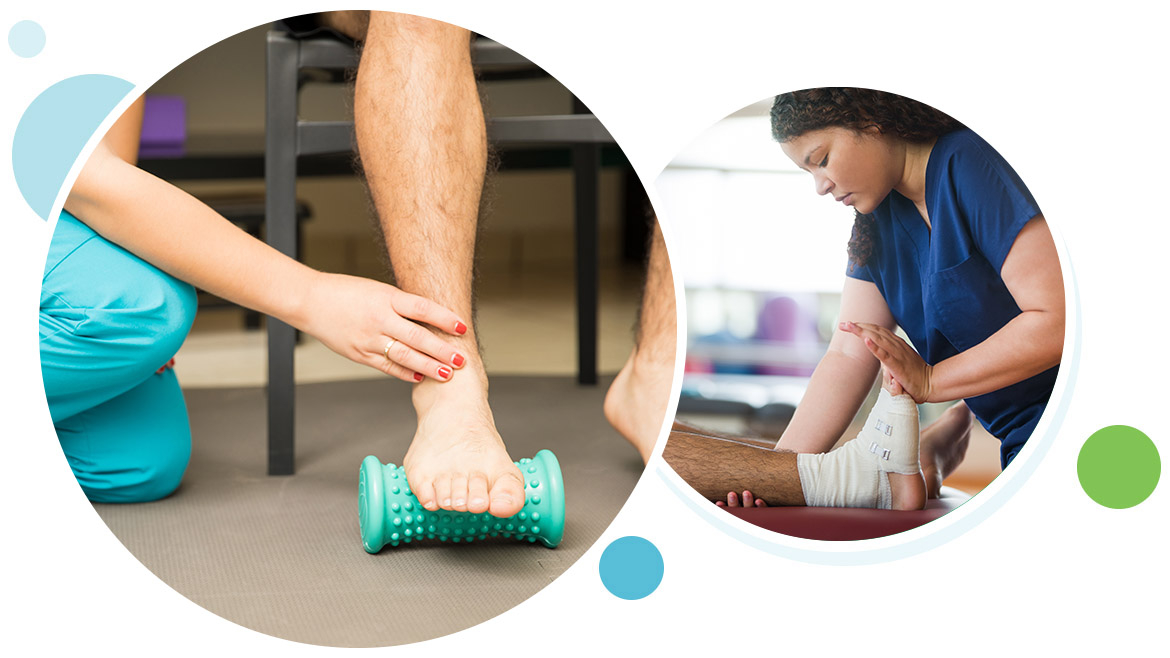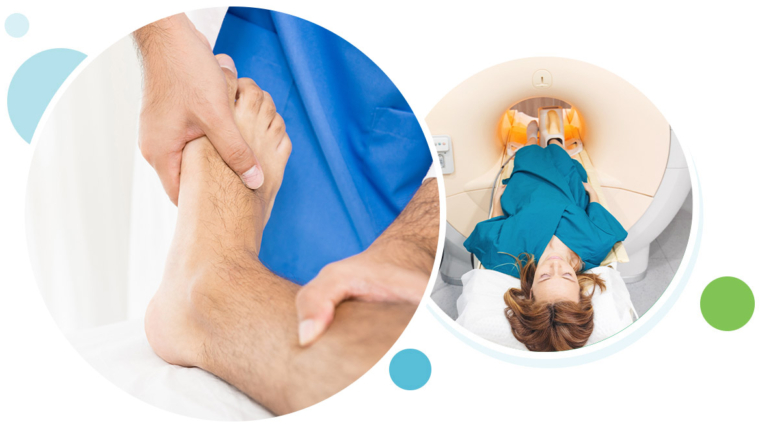Our feet, ankles and lower legs are essential parts of most of our daily lives and their health is paramount to our happiness and productivity. Given the amount of use and abuse the average person puts on their lower bodies through every single day – whether you are an athlete, regularly engage in physical work, or suffer from a medical condition – at some point you may suffer from an ailment or injury that becomes more than a nuisance, and may even require podiatric surgery to address the problem. Surgery is only the start of the solution, however, and often the most effective way to reduce post-surgical pain and speed up recovery is to follow-up your medical procedure with specialized physical therapy.
Here at Northstate Foot and Ankle Specialists, we have a team of expert full-time physical therapists on-site to provide complete foot and ankle care. This allows clients to receive care from the North State family all the way through to full recovery.
In this article, we’ll give an overview of how post-surgical foot and ankle physical therapy is an essential part of podiatric care that can greatly speed up recovery, reduce pain and improve your well-being. We will also provide some tips on how to maintain your foot health by keeping the physical therapy regimen going after you are recovered and back on your feet.
What To Expect Immediately After A Podiatric Surgery?
After any major surgery, it is common for joints and bones to be immobilized in a cast, in order to allow the healing process to take place and avoid potentially damaging movements. When it comes to the feet and ankles in particular, the high number of delicate bones and joints means it is imperative to keep everything still and in place as the body heals itself. Putting stress on bones, joints, muscles and tendons before they have had sufficient time to properly heal will likely lead to re-injury and slow recovery.
Once the immobilization period is complete, patients should be aware they’ll have to slowly increase mobility and can’t just jump back to the level of activity they may have been use to. Your body needs to carefully and strategically regain strength and flexibility to reduce re-injury; this is where physical therapy plays a vital role.
How Does Foot and Ankle Physical Therapy Work?
Physical therapy is a method of treatment that employs techniques including specialized movements and exercises, heat and/or ice treatments, massages and instrument-based approaches. The result is stretching and strengthening of the areas surrounding the injured joints, tendons, bones and or muscles. It is often used as a primary treatment for heel pain like plantar fasciitis, and for recovery of significant ankle sprains as well as in the process of recovering from other foot and ankle surgeries.
During the recovery period, physical therapy is critical for successful healing. Working together with a professional therapist who knows the details of your surgery and your medical history, you can develop a tailored plan to stimulate the affected areas of your body while minimizing pain and the chances of developing further medical issues.
The regimen that a Physical Therapist will help you develop will vary in duration, typically lasting anywhere from a few weeks to several months. Sessions usually start two to 12 weeks after surgery, beginning with an evaluation by a therapist. A detailed assessment is performed by the physical therapist including reviewing the history of any injury and all surgical procedures in order to determine what areas of the body need to be isolated and protected, as well as stretched, massaged or exercised for the most effective treatment. Once a plan is established, patients are typically seen 2 to 3 times per week.
PT Techniques and Tools
Aside from stretching and strengthening exercises, Physical Therapists may prescribe the use of other specialized techniques and equipment. One such example is instrument-assisted soft tissue mobilization (IASTM), which is a method of applying pressure on certain muscles or trigger points through the use of a medical instrument. Another technique is the use of strategically applied kinesiology tape, which gives resistance in relevant areas to strengthen the affected parts of the body. You may also be prompted to use orthotic footwear.
Maintenance at Home
Once you have had your surgery and worked with a professional physical therapist to develop a personalized treatment routine, you’ll need to be sure to engage in consistent maintenance to avoid further injury and optimize the healing process. Consistent therapy after surgery is critical to keep your body in peak condition and there are often ways you can help this process on your own at home.
Some exercises that you may be advised to do at home include pumping your ankle(s) up and down to strengthen the shin muscles and improve flexibility, stretching against a wall, or rolling your feet on a tennis ball or frozen water bottles. You might also use a towel to stretch your foot by taking a small tea-towel and while seated, capturing the bed of your foot with it and then repetitively pulling on the towel to release tension. Always consult with your physical therapist for the safest and most effective ways that you can supplement your physical therapy plan at home.
When Will You Get Back To Normal?
Having devoted the time and effort to a proper physical therapy regimen, it is now hopefully time to get back on your feet and regain some normalcy in your physical activities. However, be sure not to get ahead of yourself by jumping into these activities right away. It can be tempting to start running, working hard or doing housework as soon as possible, but it’s better to build up the intensity of your movements over time until your feet, ankles and lower legs are completely healed and have regained as much of their former abilities and strength as possible. Before you go out and push the limits, always consult with your physical therapist to review your progress and ensure that you aren’t at risk for further injury.
Even with the best treatment plan in the world, patients should keep in mind that a full recovery is unfortunately not always possible. You may experience diminished flexibility or strength depending on the condition or injury. You should remain optimistic, however, as the human body has an incredible ability to heal itself with enough determination, the right methodologies and guidance, and in most cases, a bit of hard work.
Is Physical Therapy Worth It?
Most patients that undergo physical therapy consider the investment well worth the time, effort and cost. Statistically their recovery is faster and the rate of injury recurrence is lowered. Many people also find exercises enjoyable and they can be incorporated into an ongoing exercise routine for better health over one’s lifetime.
If you feel ready to work to improve issues with your foot, ankle or lower leg pain and want to get back to your life as soon as possible, contact us today at 530-891-3338 (FEET) for a consultation with our professional staff of foot and ankle specialists. If physical therapy is a good treatment for your specific injury or foot problem the expert physical therapy team at North State Foot and Ankle can help you get back to your active, healthy free lifestyle.



